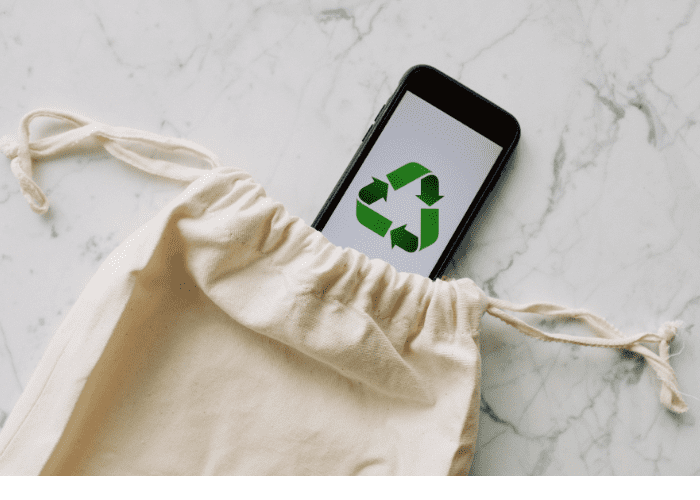Packaging plays a fundamental role in customer experience and the industry as a whole, going beyond simply containing and protecting products. It is a core part of brand identity, influencing consumer perceptions and impacting the environment. In recent years, we have witnessed a significant trend of companies adopting minimalist and sustainable packaging. This shift is not just a response to consumer demands but also a manifestation of companies’ growing commitment to environmental responsibility.
The central question that drives this trend is: why is this change happening? The primary reason cited is that both companies and consumers attribute this to sustainability and the reduction of environmental impact. As awareness of global environmental challenges increases, companies are being “pressured” to reassess their practices and adopt measures that minimize their impact on the planet. Given the growing demand for conscious consumption and environmental concerns, the transition to minimalist and sustainable packaging has become a necessity within companies.
WHY ARE COMPANIES CHANGING?
The growing shift towards minimalist and sustainable packaging stems from the recognition of the negative environmental impact of conventional packaging. The pollution generated by most packaging and the accumulation of waste have raised global concerns, prompting companies to reevaluate their practices. Studies reveal that conventional packaging significantly contributes to the current environmental crisis, exacerbating soil, water, and air pollution, highlighting the urgency for a paradigm shift.
The changing mindset of consumers is another key factor driving the adoption of sustainable packaging. As society’s values evolve towards sustainability and environmental responsibility, consumers are becoming increasingly aware of the impact of their consumption choices. Research indicates a growing preference for sustainably packaged products as consumers become more conscious of the product lifecycle and seek options that minimize their environmental impact. Consumer demand for sustainable packaging is becoming a powerful driver of change in the industry.
In addition to consumer pressures, companies are also facing increasingly stringent government regulations related to packaging sustainability. Governments worldwide are implementing legislation aimed at reducing packaging waste and promoting more sustainable practices in the industry. Simultaneously, environmental groups and non-governmental organizations are pressuring companies to adopt more responsible practices. These regulations and external pressures are, in a way, “forcing” companies to rethink their packaging strategies and prioritize sustainability in their operations.
CONSUMER TREND
The consumer trend towards sustainability has been a significant driving force behind the shift to minimalist and sustainable packaging. As environmental awareness grows, consumers are reassessing their consumption choices and opting for products that reflect their values.
A growing segment of the population prioritizes sustainably packaged products before making purchasing decisions. Concern for the environment and the desire to minimize the negative impact of packaging are shaping the preferences of some consumers and influencing their buying decisions. Consumers are willing to pay a premium for sustainably packaged products and show greater brand loyalty when they perceive a commitment to environmental responsibility.
Sustainability is already seen by many as a competitive differentiator in the current market, and minimalism as a growing lifestyle is attracting more and more people interested.
BENEFITS OF MINIMALIST AND SUSTAINABLE PACKAGING
Reducing environmental impact is one of the main benefits of minimalist and sustainable packaging. By adopting eco-friendly materials and reducing the use of natural resources, companies can significantly lower their carbon footprint and contribute to environmental preservation.
Studies show that the shift to minimalist and sustainable packaging can result in a significant reduction in the amount of plastic waste generated, helping to mitigate the negative effects of plastic pollution on terrestrial and marine ecosystems.
Several companies are already reaping the benefits of adopting minimalist and sustainable packaging. Through innovations in design and materials, these companies are drastically reducing their environmental impact while maintaining the functionality and attractiveness of their packaging.
Examples of leading companies that have successfully implemented sustainable packaging include food, beverage, personal hygiene, and fashion brands, positioning this implementation as a competitive advantage for companies.
BRAND IMAGE
Public perception of the brand is a valuable asset for any company, and adopting sustainable packaging can play a significant role in improving that image. Minimalist and sustainable packaging conveys a message of corporate responsibility, environmental stewardship, and commitment to sustainability—values that resonate with modern consumers.
Through such packaging, companies can build a positive image of environmental concern, thus increasing consumer trust and loyalty. Numerous companies have experienced significant improvements in their reputation as a result of adopting sustainable packaging. Leading brands in various sectors, such as food, cosmetics, and fashion, have invested in eco-friendly packaging as part of their corporate responsibility strategies.
These companies not only gain recognition for their sustainable corporate practices but also attract consumers who value brands committed to the environment. By demonstrating a genuine commitment to sustainability, companies are strengthening their relationships with customers and solidifying their market position.
COST SAVINGS
The transition to minimalist and sustainable packaging, besides benefiting the environment, can result in more savings for companies. By simplifying the design and reducing the use of materials, minimalist packaging helps lower production costs. This is reflected in reduced spending on raw materials, labor, and energy, contributing to a more efficient and economical operation.

Several companies are already reaping the rewards of the savings provided by minimalist and sustainable packaging. Leading brands in different sectors have adopted leaner and more efficient packaging strategies, yielding better results. By investing in sustainable packaging, companies not only reduce operational costs but also strengthen their financial and competitive position in the market.
CHALLENGES AND OBSTACLES
While the shift to sustainable packaging can offer a range of benefits, companies also face significant challenges, particularly regarding initial costs. The transition to eco-friendly packaging often requires high investments in research, development, and infrastructure. The costs associated with acquiring sustainable materials and updating equipment can pose a financial hurdle for many companies, especially those with limited resources.
To address the initial costs of transitioning to sustainable packaging, companies can adopt strategies such as seeking partnerships with suppliers that offer sustainable materials at competitive prices. Additionally, investing in more efficient and automated production technologies can help reduce long-term operational costs, offsetting initial expenses.

Another strategy is to transparently communicate the benefits of sustainable packaging to consumers, allowing companies to justify slightly higher prices associated with these products.
CONSUMER EDUCATION
Consumer education plays a crucial role in the adoption and appreciation of sustainable packaging. Many consumers may not be fully aware of the environmental benefits of such packaging and the positive impact it can have on the planet. Therefore, it is essential to provide clear and accessible information about the benefits of sustainable packaging, highlighting how it contributes to waste reduction, natural resource preservation, and pollution reduction.
To enhance consumer awareness of sustainable packaging, effective strategies need to be adopted. For example, integrating sustainability information into product packaging, providing consumers with relevant data about the materials used and their environmental impacts. Additionally, engaging educational marketing campaigns can be launched to highlight the benefits of sustainable packaging and encourage the adoption of responsible consumption practices.
Partnerships with environmental influencers and sharing success stories of companies that have adopted sustainable packaging can also help raise awareness among consumers and inspire them to make more conscious choices. Educating people about minimalist and sustainable packaging is essential to promote significant changes towards a greener and more sustainable future, especially nowadays, as the minimalist lifestyle is attracting more people.
EXAMPLES OF COMPANIES THAT HAVE ADOPTED MINIMALIST AND SUSTAINABLE PACKAGING
Unilever: Unilever is one of the leading companies in the movement towards sustainable packaging. They have set ambitious goals to reduce plastic usage in their packaging and increase the use of recycled materials.
Lush: Lush is a cosmetics company known for its minimalist and sustainable packaging. They opt for simple packaging, often made from recycled and biodegradable materials, and avoid excessive plastic use whenever possible.
IKEA: IKEA, known for its furniture and home products, is committed to making its packaging more sustainable. They are gradually eliminating single-use plastic from their packaging and replacing it with more eco-friendly materials such as recycled cardboard and bioplastics.
CONCLUSION
The transition to minimalist and sustainable packaging is becoming a priority for companies worldwide, driven by increasing environmental awareness and consumer demand for more sustainable practices. Throughout this post, we have explored the reasons why companies are adopting this change, highlighting the environmental, economic, and brand image benefits associated with sustainable packaging.
The long-term benefits of minimalist and sustainable packaging are undeniable. Besides reducing environmental impact and operational costs, the packaging contributes to building a positive brand image and strengthening relationships with consumers concerned with sustainability. By investing in sustainable packaging, companies are protecting the environment for future generations and ensuring their own long-term sustainability.
We invite readers to reflect on their own consumption choices and the impact they can have on the environment. By opting for sustainably packaged products and supporting companies committed to environmental responsibility, consumers can play a crucial role in this movement towards a greener and more sustainable world.
Suggested Reading: The theme of this post was inspired by The Conversation.








